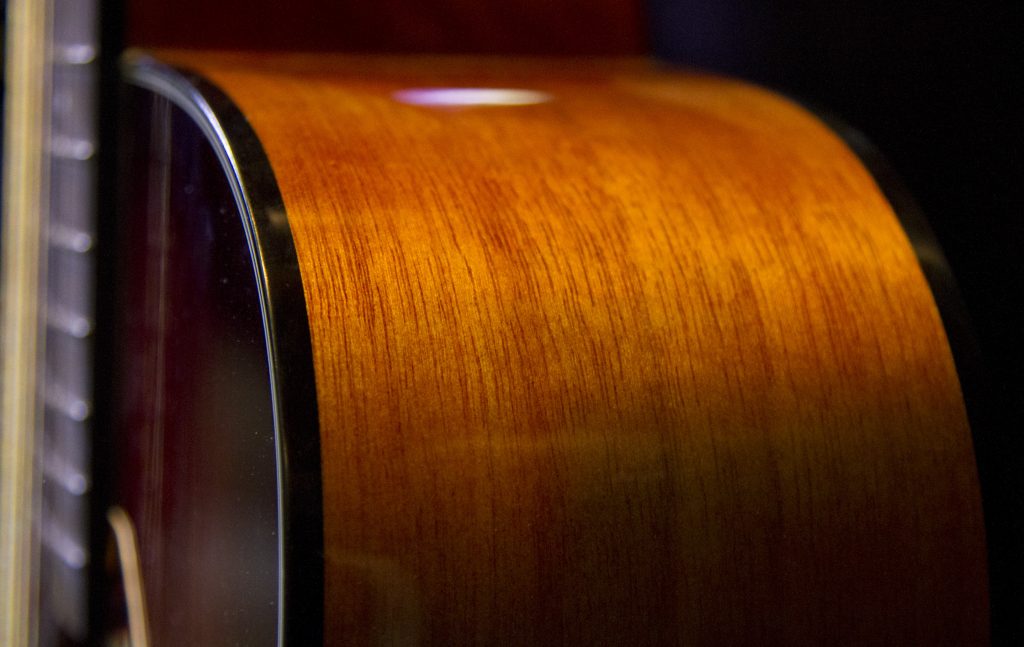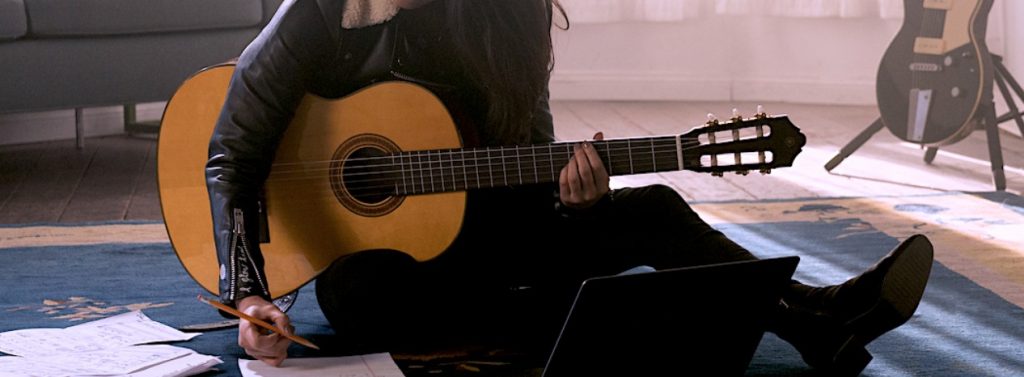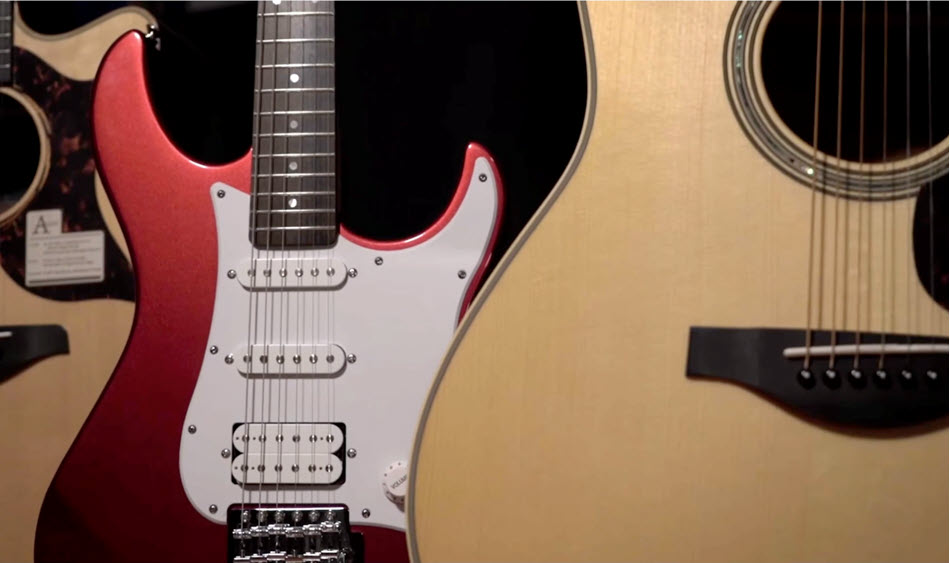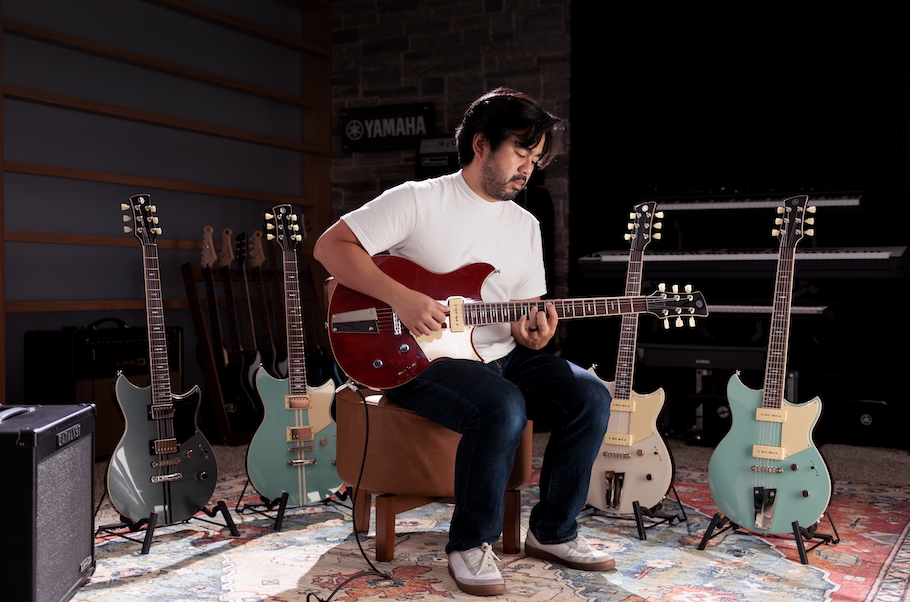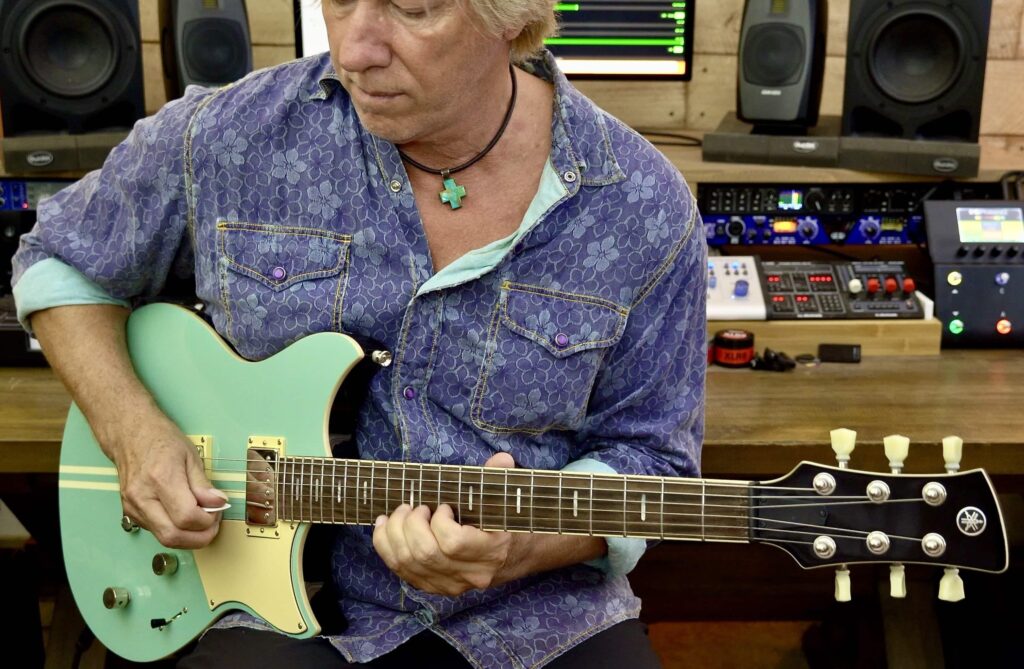Taking Your Guitar on the Road
Traveling with a CSF-TA TransAcoustic.
I recently spent six weeks traveling through Indonesia, Australia and the Philippines. The trip involved ten flights, two inter-island ferry transfers and two speedboat rides, plus multiple Tuk Tuks (a motorized three-wheel taxi), regular taxis, shared van transfers, and of course, lots of walking. (Sometimes running to make the next connection!)

In this posting, I’ll tell you about that amazing experience and describe the preparations I made in advance, along with some general tips for taking your guitar on the road.
Choosing the Right Guitar to Take on the Road
Like most people who travel, I’d planned on taking one small suitcase for clothes, plus a backpack for my computer, phone charger etc. But, unlike many folks, when I travel, I usually end up performing too, so I also needed to take along a guitar that I could plug into any PA system or amp. Obviously, the physical size and overall weight of the guitar had to meet airline carry-on guidelines. (More on this below.) I also often write songs on the road, so having a guitar that was tonally inspirational was important too.
After careful consideration, I chose to take a Yamaha CSF-TA TransAcoustic guitar with me. This remarkable instrument is small and easy to play, is relatively lightweight, and comes with a durable hard bag with adjustable shoulder straps. Best of all, it sounds incredible, with onboard effects and a piezo undersaddle pickup system. In short, it filled all my requirements.
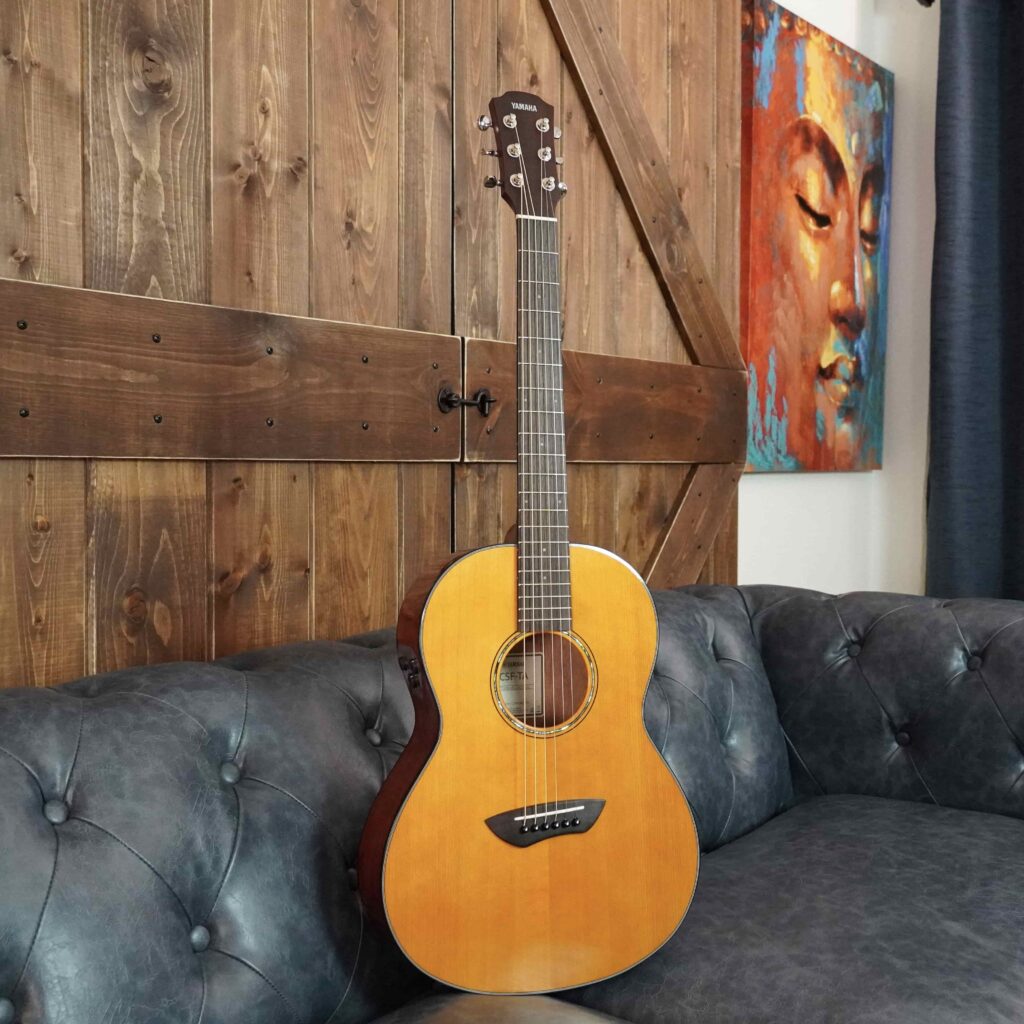
Checklist Before Departure
In preparation for the trip, I put new coated Elixir strings on the CSF-TA and put a spare set in the case. I also made sure to place a supply of picks, a capo, a headstock tuner, a small pair of wire clippers and string cleaner in the guitar pouch too.
I knew that Indonesia and the Philippines would be extremely hot and humid, while Australia would be hot, with a dry climate. For that reason, I put humidi-packs inside the sound hole to regulate the instrument’s humidity. This also automatically adds/removes moisture from your guitar as needed while it’s inside the case.
I also took into consideration the fact that, if the flight crew would not allow me to take the guitar on the plane and it was instead put into the hold of the aircraft, the surrounding temperatures would be much colder than in the cabin areas. What’s more, I knew that the guitar would be going from hot taxi rides to air-conditioned hotels within short periods of time. Given all these temperature extremes, the shorter scale length of the CSF-TA would likely provide a better tuning platform than a full-size guitar.
Air Travel Tips
We’ve all heard horror stories about how the airlines treat guitars, and baggage in general, and I have personally had several bad experiences of my own. Here’s some advice to anyone who wants to take a guitar with them on their travels:
- Smaller domestic flights and aircraft throughout the U.S. and Asia generally have smaller overhead bins. Think ahead when you fly and see which aircrafts you’ll be flying on. The larger the aircraft, the larger the overhead bins, and therefore the better the chance of taking your guitar into the main cabin. The smaller the guitar, the better the chances are too.
- If you have a full-size acoustic, soft bags generally raise eyebrows less than a hardshell case. That being said, if your guitar is worth thousands of dollars you’ll have to decide if you trust a gig bag to protect your investment.
- Pay for priority boarding if you can afford it. First come, first served … and if my guitar is in the bin, I win. (Note that underpants won’t get crushed in the hold if another passenger runs out of space in the bins.)
- I never offer to check my guitar when I’m at the bag drop and check-in desk, but comply when asked. Check-in counter staff are generally very nice, but often tell you that their policy is to not let guitars on the plane and that you’ll therefore need to check your guitar in. I’m always polite and ask them to label the guitar with a fragile sticker and have the guitar walked to the plane with the other oversized items. In the United States, some airlines will allow you to take your guitar to the gate and “gate-check” the guitar. This is where wheelchairs and baby strollers, etc. get left before boarding. The staff there will walk the guitar down to a special area in the hold for these items. They’ll also bring it up to the same area for you upon de-planing. This means the guitar won’t go on the conveyor belt and dumped alongside other heavy bags, where there is a potential risk that it could be mishandled by ground staff.
- Fighting with the staff won’t get you anywhere, but you’ll also find that a lot of the decision-making comes from the airlines’ staff manager. I asked the flight crew manager in Denpasar, Bali if my guitar could go in an empty seat and she said yes, provided that it was an empty window seat. Score.
- If your guitar is put in the hold, collect it promptly upon arrival, and open the case to make sure nothing is damaged. Report any damage to the airline staff before you leave the airport.
Foot Traffic
As many of you know, navigating airports, changing planes, and general travel requires a lot of walking and dodging other passengers. Having a small, lightweight guitar in a gig bag with shoulder straps is a godsend in these scenarios. One hand is likely wheeling a suitcase, one shoulder can carry a backpack, and the other hand or shoulder can carry the guitar.
Just remember that no travel is without timing issues, check-ins, boarding, de-planing, immigration, passport control and customs lines. How you juggle the gear you travel with can reduce the frustration when you’re trying to find boarding passes, visas and hotel information.
The bottom line is this: Plan ahead, and double-check everything.
Water Travel Tips
One of my favorite locations in the Philippines is the beautiful and secluded resort, Cauayan Island. The day started with a taxi ride in Cebu; a small plane hop to El Nido, Palawan; a shared van ride to the boat docks, and then a speedboat to the island.
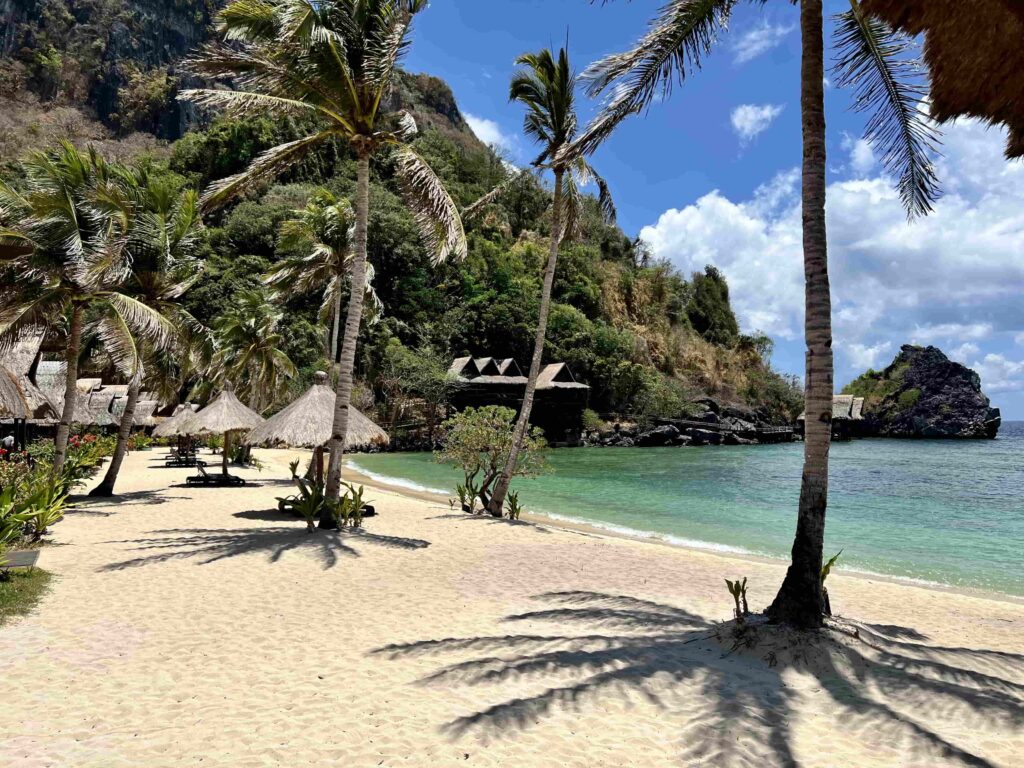
Travel by inter-island ferry is very common in the Philippines. Most luggage can be checked in and stored outside the cabin, although the undercover outside storage compartments looked a bit fragile to me. Fine in good weather … not so good in torrential rain on the ocean.
I took my guitar and backpack onto the ferry, but found there weren’t any overhead bins; onboard luggage is instead placed at the front of the cabin. This is fine in calm weather, but remember: other passengers have heavy bags there too. Place your guitar upright and without anything on top, just in case it gets rough on the open seas.
And, if you check your luggage, make sure not to lose your ticket! It’s absolute chaos at the arrival port, so stay aware, and make sure you keep an eye on your belongings at all times.
Land Travel Tips
I found that most taxi drivers were very helpful; however, they would always want to put my guitar upside down in the trunk of the car. My advice is to take the guitar into the back seat with you, where it’s climate controlled, and you can personally handle it with the care it deserves. I also did this on any shared van transfers … assuming, of course, that space allows.
I had such a blast riding around in the Philippines in the open air Tuk Tuks. You really get to experience the local way of life on the roads between towns and in the city streets and provincial rural areas. Again, I put my guitar on the back seat with me. There’s limited space back there, so I suggest you hire a personal driver rather than a shared ride.
Never leave your guitar in a hot automobile! Glue can soften in extreme heat, and delicate parts may warp beyond repair if heat damaged. Likewise, avoid extremely cold climates for prolonged periods of time.
Climate Changes
As expected, Asia was hot and humid, but the CSF-TA remained stable and held its tuning well from location to location. Australia was hot and dry during the daytime, but temperatures could drop quite a bit during the evening.
My CSF-TA guitar is over three years old and has acclimated to mild temperatures and moisture changes; however, the humidi-packs definitely help when you keep the guitar in the case … which is something I’d recommend whenever it’s not being played.
The Video
I performed at several locations during my trip. One morning my niece in Australia asked me to sing everyone a song at breakfast time. She filmed me singing one of the cover songs I play at my gigs — John Mayer’s “Say” — using the CSF-TA without any of the onboard effects engaged. This video shows my impromptu performance captured on a smartphone, along with some of the stunning locations from my travels.
The Guitar
The parlor-size Yamaha CSF-TA TransAcoustic guitar features a solid spruce top, along with a mahogany back and sides. Many players may find the smaller body size and short scale much easier to play than a dreadnought guitar, and it’s certainly easier to travel with. It also has a built-in piezo pickup and allows the user to add two types of reverb and variable amounts of chorus without the need for amplification or pedals.

The Wrap-Up
It’s always great to perform in another country, or at least capitalize creatively on the inspiration you’ll find at new destinations. However, airports are getting busier, and travel isn’t as luxurious as it used to be (unless you have a private jet or travel first class, both of which are unavailable to most of us).
I’m happy to report that my CSF-TA survived multiple temperature changes and other challenges during my recent journey, and I’m confident that, with careful forethought and detailed planning, you can travel comfortably with your guitar too, keeping it perfectly safe while dealing with all the rigors of the road.
PHOTOGRAPHS COURTESY OF THE AUTHOR.










